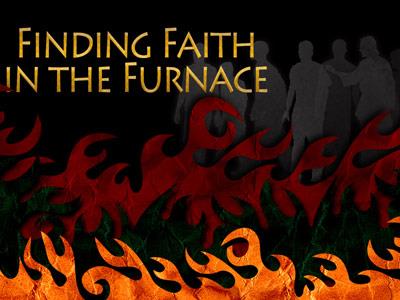-
The Story Of Daniel - A Hero In A Pagan Culture Series
Contributed by Joey Nelson on Nov 28, 2017 (message contributor)
Summary: The Bible is quite literally an anthology of hero stories. The writer chooses the most crucial events in the hero’s life and builds his story on those key moments. Let’s look at The Story of Daniel - A Hero in a Pagan Culture.
INTRODUCTION
Opening Statement: Creating and choosing heroes are one of the most significant things that cultures do. We see this everyday in one way or another. Watch ESPN Sports Center, and you can see an entire evening of basketball games reduced to a couple of minutes by Kenny Mayne and Dan Fitzpatrick, who highlight the key plays by the "hero" of each game.
Transition: The same principles that lie behind the selectivity that transforms a basketball game into a few shots on the evening news, also apply to the hero/heroine stories of the Bible. The Bible is quite literally an anthology of hero stories. The writer chooses the most crucial events in the hero’s life and builds his story on those key moments.
Definition: Hero/heroine stories are built around the life and exploits of the hero/heroine. Many times their lives illustrate important values in the midst of conflicts within the community that has produced him/her. Through all of the conflict, however, the hero/heroine is able to act for good and to demonstrate that life has a significant pattern and end when God is the center. I want to talk to you about one of these many stories today.
Title: The Story of Daniel - A Hero in a Pagan Culture
OUTLINE
I. Setting the Stage
A. Background Information: As one studies the history of ancient Israel, two significant dates must be mastered in order to understand what was happening in two-thirds of the entire Old Testament. You know that Israel was divided into two kingdoms after the reign of Solomon. The northern kingdom was known as Israel. The southern kingdom was known as Judah, named after the one dominant-tribe of Israel that occupied this part of the land. The first date has to do with the northern kingdom. The second date has to do with the southern kingdom. Most of the major/minor prophets prophesied to either one of these nations prior to, during, and after they were conquered.
1. The first date is 722 BC. This was the year that the Assyrians conquered the nation of Israel (Samaria). They deported many Jewish captives to Assyria and imported Assyrians into Israel. The rationale was to remove key leaders to eleminate possible revolt and then to assimilate the Israelites into the Assyrian way of life. That’s why Jews hated Samaritans. They were the first century equivalent to the melano issue today: half-breeds, part-Jewish, part-Assyrian.
2. The second date is 586 B. C. This was the year that the Babylonians conquered the nation of Judah (Jerusalem). They had a similar philosophy to the Assyrians. Deport and assimilate.
B. Question: Where does Daniel fit into all of this? Daniel lived in the southern kingdom of Judah. The attack of Dan.1:1 in 605 BC was the first of three major deportations of Jews to Babylon. Daniel, the promising teenager, was in this group who were carried away under the reign of Jehoiakim. The second one occurred in 597 BC. The Babylonian King Nebuchadnezzar took Judah’s King Jehoiachin and senior officials to Babylon (2 Kings 24:10-17; Ezekiel 1:2-3). Ezekiel, the prophet, was also in this group. Intent on taking Egypt, King Nebuchadnezzar returns ten years later to find Jerusalem in rebellion. This led to the third deportation in 586 BC. King Zedekiah’s sad story is given in 2 Kings 24:18-25:12. The temple and the city of Jerusalem were thoroughly destroyed by Nebuchadnezzar’s armies.
C. Transition: For 70 years, their nation was lost in oblivion (Jer. 25:11). Imagine losing everything that identifies us as Americans. No more national holidays like Christmas, Thanksgiving, or July 4. No more proms to go to. No churches to attend. That’s what is was like for Daniel. No more temple worship. Judah had lost their national identity. But Daniel records for us what happened after he arrived in Babylon. He was able to maintain his identity in the face of divine discipline, national loss, and a pagan university.
II. Looking at the Hero’s Book
A. Explanation: The Book of Daniel falls into two parts. The first six chapters are historic, giving us pictures of the times and conditions in which he lived. The last six chapters are prophetic, giving us visions and interpretations. The first half of the book consists of six historic events. All six of these ordeals involve a testing of the chief character and a supernatural rescue by God.
1. The testing of four Hebrew youths (Dan.1) - Divine vs. Human nurture. They even assign new names to Daniel’s friends in an attempt to stamp out their Jewish identity. Daniel and friends emerge as the best scholars.
2. Daniel’s interpretation of Nebuchadnezzar’s dream (Dan.2)- Divine vs. Human wisdom. Test of Daniel’s ability to interpret dreams. Daniel prayed and God revealed.
3. The ordeal of the fiery furnace (Dan.3) - Divine vs. Human worship. The test had to do with compulsory emperor worship, not uncommon in a pagan culture. Daniel’s three friends were loyal to God and God rescued them.

 Sermon Central
Sermon Central



